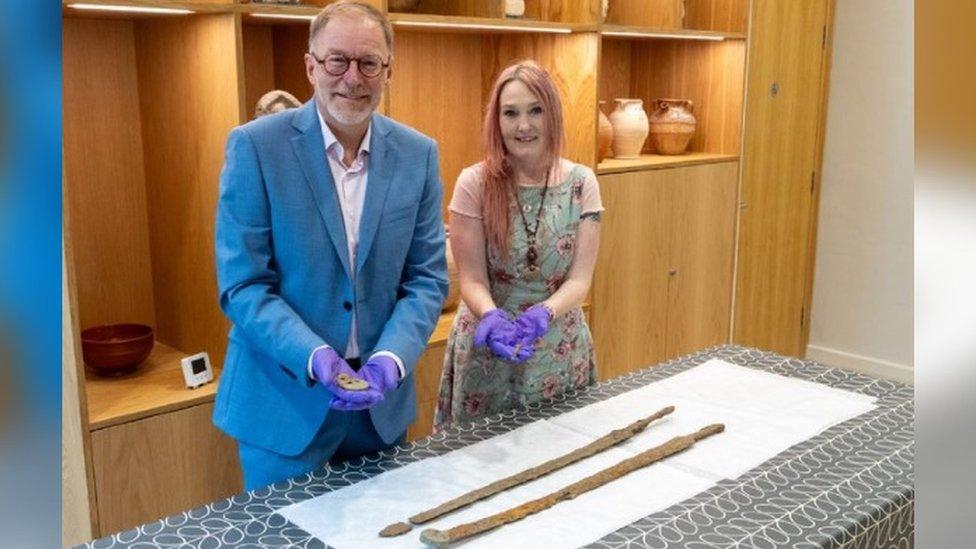Roman swords 'real crackers' for Cotswolds as markings found
- Published
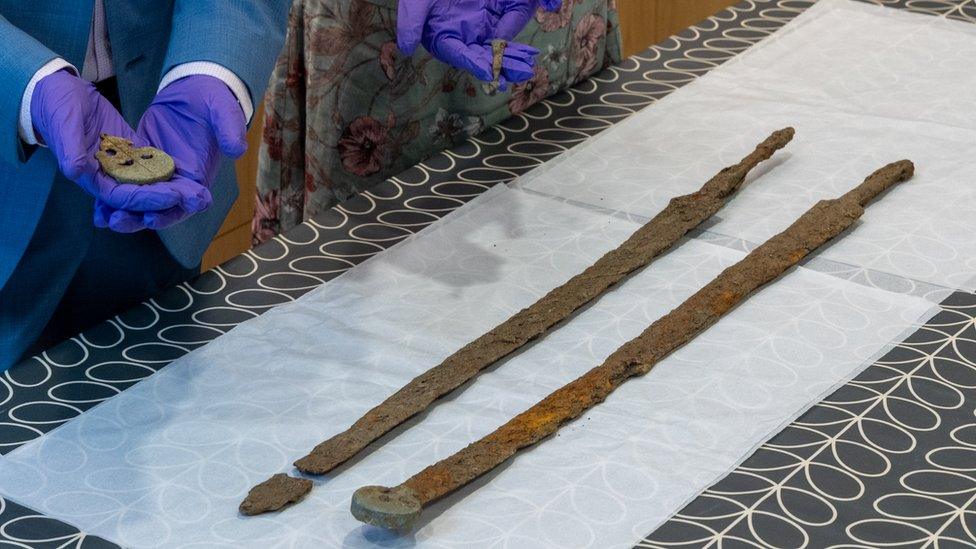
The swords were found during a metal detectorist rally in the north of the Cotswolds
Two "important" Roman cavalry swords discovered in the Cotswold have been found to have "decorative markings".
Glenn Manning found the swords during a detectorist rally in the north of the Cotswolds in March.
Experts have now x-rayed the swords and found decorative markings on one of them.
Caroline Morris from the Corinium Museum said: "These are some real crackers for the Roman Cotswold area and are really important."
The swords were being looked after by the Corinium Museum in Cirencester but have now been taken to Fort Cumberland in Portsmouth where they have been examined in a laboratory by Historic England.
The swords are thought to be cavalry weapons, intended for use on horseback, from almost 2,000 years ago.
Only two other swords from the same time period have been found in the UK before.
Karla Graham, senior archaeological conservator for Historic England, said: "The main reason the swords came to us is that we wanted to find out how they were constructed and what kind of condition they are in because with the soil and the corrosion we can't see that.
"So the key thing we have found in the swords is that one is a plain sword and the other sword is pattern wielded - its like a decoration on the sword blade, it would have really stood out."
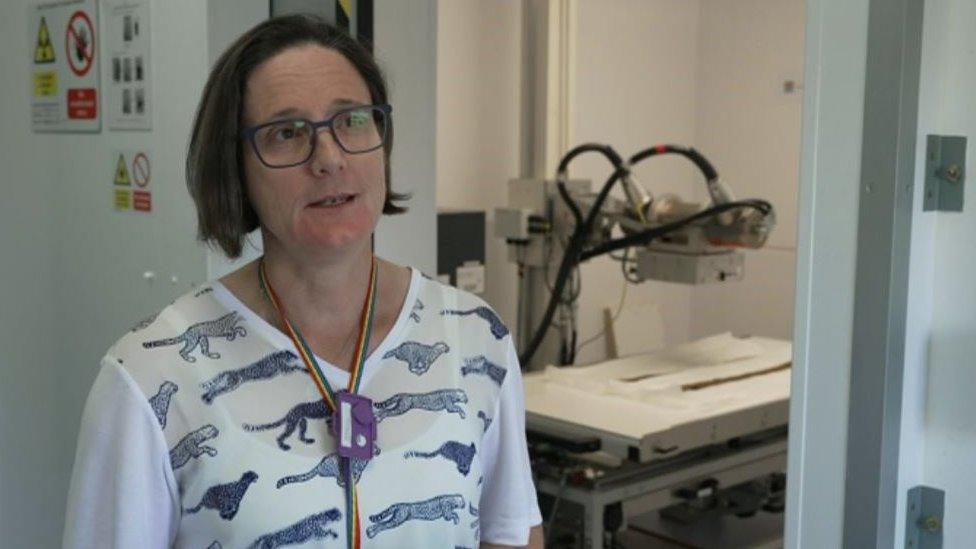
Karla Graham, senior archaeological conservator said the sword would have "stood out"
She added: "If we cleaned them up you wouldn't see that pattern wielding - there is very little of it surviving - the swords are very corroded so there isn't anything to see there - the x-ray image is the literally the only way to see that.
"It should help the curator to understand and refine the dating of the swords themselves but also what is is important is that because you can't see this decoration, the x-ray are really informative to help the public understand and engage in the swords themselves."
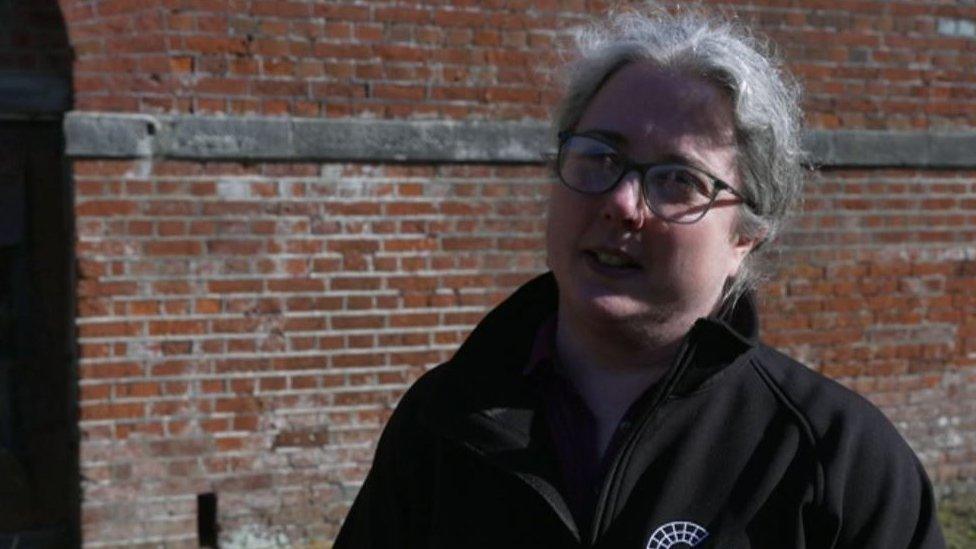
Caroline Morris said the swords were very unusual
Ms Morris added: "It's one of the best finds we have had in years, especially in the Roman era.
She added they were "really important" and "so unusual" as they would give an insight into Corinium Dobunnorum, a Roman-British settlement at Cirencester.
She said: "Just to get that bit more detail about what the cavalry men carried with them and how these things were made."
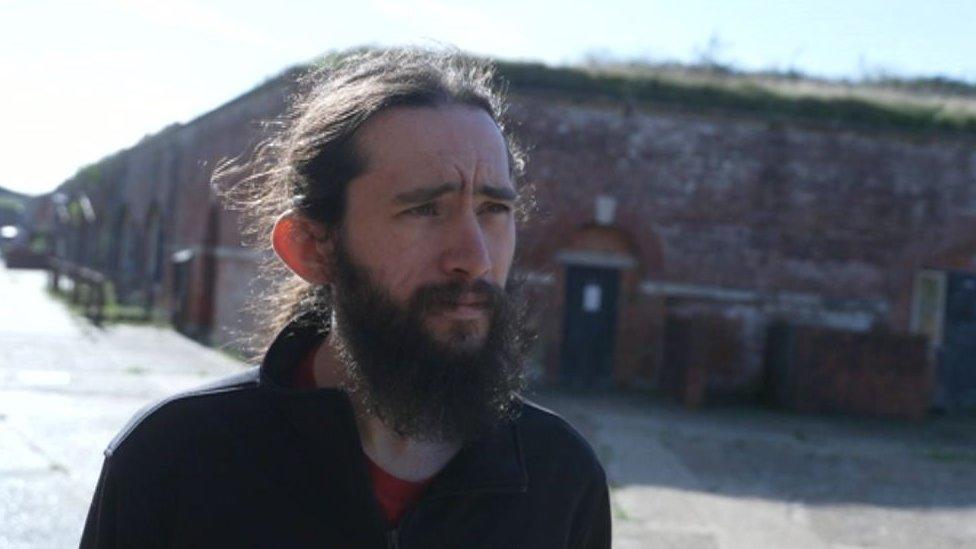
Phillip Brant-Simmons said the swords were "extraordinary"
Phillip Brant-Simmons collections and engagement at the Corinium Museum said it was "incredibly exciting" to see the x-rays.
"If we're lucky we might get something about how the swords were made or how they were repaired if they were broken at some point."
The swords will eventually be displayed in the Corinium Museum next year.

Follow BBC West on Facebook, external, X, external and Instagram, external. Send your story ideas to: bristol@bbc.co.uk , external
Related topics
- Published19 September 2023
